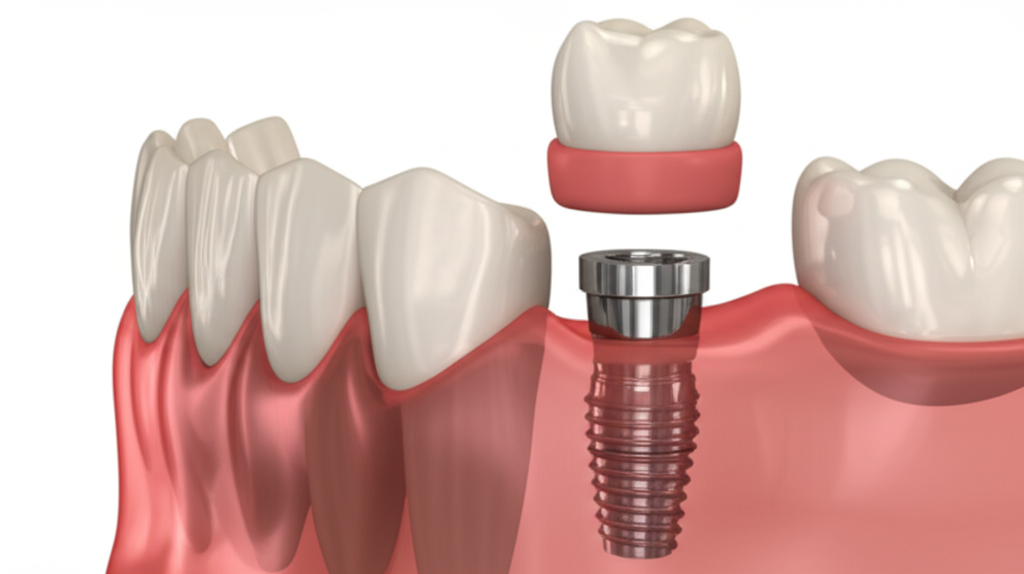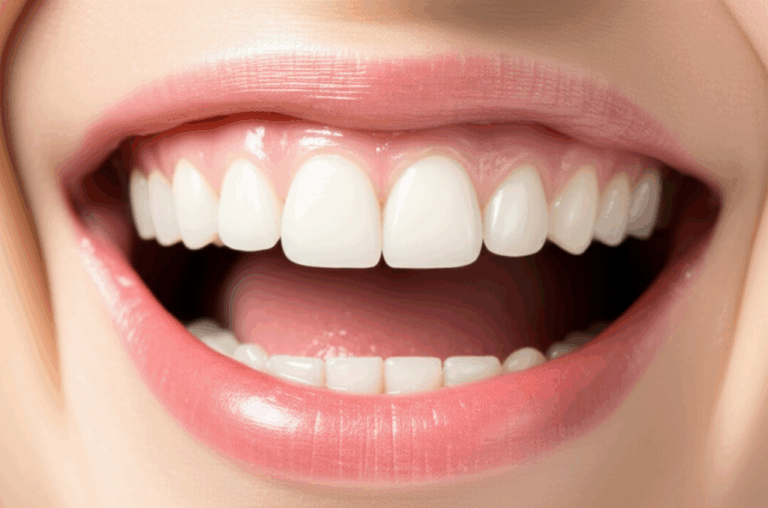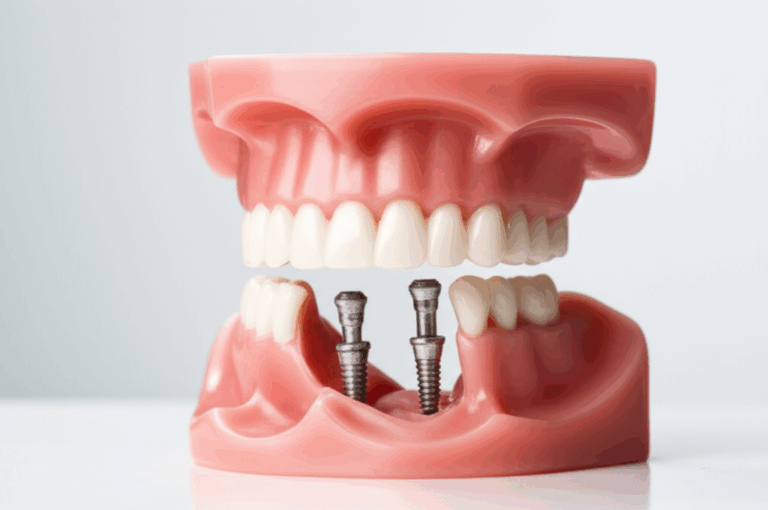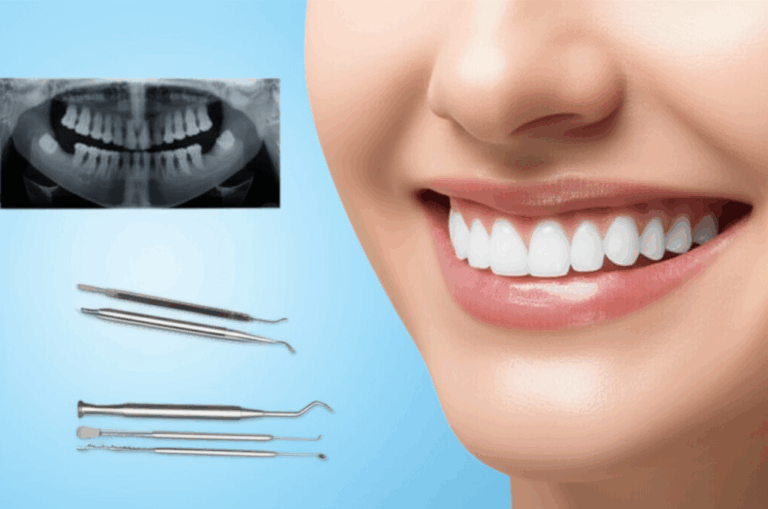
What Are Hybrid Dental Implants? My Firsthand Journey to Permanent Tooth Replacement
By someone who has been in your shoes and walked the path to a changed smile
Table of Contents
- Introduction: My Struggle and Search for Stability
- What Exactly Are Hybrid Dental Implants?
- How Do Hybrid Dental Implants Work?
- Who Is a Candidate for Hybrid Dental Implants?
- The Hybrid Dental Implant Procedure: What I Experienced Step-by-Step
- Benefits of Hybrid Dental Implants: What Changed for Me
- Disadvantages & Considerations: The Honest Truth
- Cost of Hybrid Dental Implants: Investment and Insurance
- Hybrid Implants vs. Other Tooth Replacement Options
- Caring for Hybrid Dental Implants: My Tips for Longevity
- Conclusion: Why I Believe Hybrid Dental Implants Changed My Life
- Frequently Asked Questions
Introduction: My Struggle and Search for Stability
It all started with frustration. For years, I dealt with loose dentures that moved every time I laughed or tried to eat something like corn on the cob. Denture glue never gave me real peace. Parties and meals made me nervous. If you’re here, you maybe know that kind of discomfort and worry.
I didn’t know much about dental implants, let alone “hybrid” ones. But I knew I wanted something more stable, something to give me back confidence, my smile, and let me eat without worry.
That’s how my journey into hybrid dental implants started. Now that I’ve gone through it, I want to tell you everything in plain speak, so you can decide what’s right for you.
What Exactly Are Hybrid Dental Implants?
When I first looked up ways to fix my teeth, all the words were confusing. Hybrid dental implants sounded like something only for fancy people. So let me explain it for regular folks like us.
A hybrid dental implant is a set of fixed teeth (a fake set or bridge) that is attached tightly to just a few strong dental implants—usually four to six for an upper or lower jaw. The implants are small metal screws that go into your jawbone, and after a while, your bone grows around them to hold them firm.
Why “hybrid”? These mix the best bits from dental implants (they’re fixed, solid) and dentures (they replace a whole jaw’s teeth all at once). Sometimes you’ll hear names like All-on-4 or All-on-6, which just means how many implants are holding up the arch of teeth. It’s also called a fixed hybrid denture or full-arch fixed bridge, but they all mean the same idea.
A hybrid implant system has three parts:
- Dental Implants: The metal “roots” put into your jaw.
- Abutments: Little connectors that stick out from the implants.
- Prosthetic Arch: The custom bridge of teeth that goes on top of the abutments. These can be made from different stuff—acrylic for cheaper, zirconia or porcelain for those who want something that really lasts and looks good.
Unlike regular implants (which swap one tooth at a time), hybrid implants can give you a whole row of teeth, with fewer posts and a bit less hassle.
How Do Hybrid Dental Implants Work?
If you want to know how this all comes together, I’ll tell you just like I learned.
The Foundation: Implant Placement
First, the dentist puts 4–6 metal dental implants in your jaw, spaced out to take advantage of the good bone you still have. They angle them just right, so often you don’t need more bone even if you’ve lost some over the years. You’ll be asleep or really numb for this.
Then, you have to wait while your jawbone grows around each implant, which takes about 3–6 months. This is called osseointegration. Once that happens, these titanium “roots” are really stuck in, much stronger than anything denture glue can do.
The Connection: Abutments
Once the implants are healing well, the dentist puts on abutments—like special stubs or connectors—that stick out over your gums. These are what the new teeth hold on to.
The Restoration: The Prosthetic Arch
Here comes the best part: your new teeth! The prosthetic arch is a single piece that looks like a real set of teeth and gums. The materials might be:
- Acrylic: Cheaper, but can wear down or stain.
- Zirconia: Very strong, tough to stain, feels real.
- Porcelain: Looks good and lasts, but needs special work to make.
The whole new set of teeth is attached for good to the abutments with screws or tiny fittings. They don’t come out—you clean them right in your mouth, like normal teeth.
What’s Different About Hybrid Implants?
- Compared to Loose Dentures: No glue or slipping. Clean them like teeth.
- Compared to Single Implants: Fewer posts, less work in your mouth, lower cost if you’re doing a whole row.
- Compared to Bridges: Fixes a full jaw, not just a gap—no need to use your own teeth as anchors.
For me, having solid teeth again made a huge difference.
Who Is a Candidate for Hybrid Dental Implants?
I wondered, “Can I even get these?” Here’s what I found out, and what the dentist told me.
Good candidates are:
- People who are missing all or most teeth in a jaw.
- Those who have teeth that can’t be saved.
- Denture users annoyed with loose or painful fake teeth.
- Folks with enough jawbone left (and with this method, you sometimes need less bone than for regular implants).
- People in decent health—my diabetes was okay because it was under control.
- Non-smokers, or those willing to stop for a while, since healing is slower if you smoke.
You might NOT be able to get them if:
- You have bad gum disease or infections.
- Your health makes surgery dangerous.
- You’ve lost a ton of jawbone (sometimes you can still get them after more work, but it costs extra).
My dentist checked my mouth, took scans, and said it was safe for me. Best advice: let a pro check you out and don’t just guess.
The Hybrid Dental Implant Procedure: What I Experienced Step-by-Step
I’ll never forget being both scared and hopeful before my first visit. If you’re thinking about it, here’s how it happened for me, in plain steps.
1. First Visit & Planning
- Exam: Dentist looked at my mouth, gums, and jaw. I got a 3D scan of my head—no biting into gross goop these days!
- Scan: Most new offices use digital scans.
- Talk Time: We discussed my goals, what could go right or wrong, and it made me feel better to know what to expect.
2. Implant Surgery
- Getting Numb: I picked IV sedation, but you could go with local or full sleep.
- Pulling Teeth: I had a few teeth left—they took them out in this step.
- Putting in Implants: Dentist drilled in six metal posts in my low jaw. Took a few hours, didn’t hurt.
3. Temporary Teeth—Same Day
Really—later that same day, I left with a set of simple, fixed teeth. Not my final ones, but I could smile, eat, and talk fairly normally while I was healing up.
4. Healing Time
I came in for checkups every couple of weeks for about four months. My mouth was sore for a few days, but nothing I couldn’t handle—felt like regular tooth pulling pain. I ate soft foods and followed their rules. While I healed, my jaw grew around the implants.
5. Final Teeth
After healing, I went in for a new fitting. The dental team used my digital scans to design the real set of teeth that fit just right. After a final tweak, they fixed in my new permanent set. I nearly cried—it looked and felt so natural!
Benefits of Hybrid Dental Implants: What Changed for Me
If you’re asking if all the trouble is worth it, here’s what made the biggest difference for me.
Solid Chewing
Right away, I could eat almost anything without worry. No slipping, no wiggling. Apples, steak, even corn—no problem. Seems like most people get about 70–90% of the power of real teeth, and that seems about right for me.
Comfort & Confidence
No sticky glue, no plastic rubbing my gums raw. No more panic about teeth coming out when I was laughing or eating. Friends told me I finally smiled “for real” again.
Stops Bone Loss
Before, my cheeks got a little sunken because old-style dentures don’t push on your jawbone. Hybrid implants press on the bone so it doesn’t shrink and you keep a younger look.
Quick and Simple
Just four to six implants saves you lots of extra surgery, and costs less than putting in an implant for every missing tooth.
Looks Like Real Teeth
My fake teeth were made to fit me—shape, color, all that stuff. With a good dental tech behind the scenes, my teeth seriously look natural.
Long Lasting
I’ve had mine for years, still going. Implants can last more than 20 years. The teeth part (the arch) might wear out faster—softer plastics in about 10 years, but ceramics can easily outlast that.
Talking
No more lisping or odd sounds. My speech just sounds like me again.
Disadvantages & Considerations: The Honest Truth
No fake teeth are perfect. Real talk, here’s what’s not so great.
Price
Yep, this is the big one. Hybrid implants aren’t cheap—usually $15,000 to $30,000 or more per jaw. It can depend on what they’re made of, where you live, and if you need bonus work like grafting.
But to me, when I added up years of old dentures, glue, new fittings, and fixing problems, the price for hybrids made sense over time.
Surgery
This is not just a quick fix. There’s surgery, and a recovery. But for me, the bit of pain was worth the long-term payoff.
Cleaning
Just because they’re fixed doesn’t mean you can ignore cleaning! You gotta brush and water-floss under them every day, and see your dentist for cleanings at least twice a year. It’s a must.
Problems
Can happen, but not often. Infection, an implant not healing, or a tooth breaking (don’t chew ice). Pretty rare—most people have 95–98% success.
Cost of Hybrid Dental Implants: Investment and Insurance
Let’s talk money.
Why the Cost?
- How Many Implants: More means more cost.
- Type of Teeth: Acrylic costs less (but wears out), tough ceramics cost more.
- Where You Live: Big city? More expensive.
- Extra Stuff: Bone grafts, pulling out old teeth, etc.
- Dental Work Quality: Good labs and good tech cost more.
Typical range near me: $15,000–$30,000 (sometimes more) for one jaw.
Paying for It
- Regular dental insurance usually doesn’t cover much—maybe pulling teeth, not the new ones.
- Most dentists have payment plans—I paid it off over 18 months.
- Get a clear print-out of what you’re paying for—don’t be scared to ask, as lots of stuff (like temporary teeth) can hide extra charges.
Don’t just shop for the lowest price—you want these to last a lifetime.
Hybrid Implants vs. Other Tooth Replacement Options
Some plain answers, from what I learned:
Hybrid Implants vs. Regular Dentures
- Stability: Hybrids don’t shift. Dentures can wiggle or come loose.
- Bone Health: Hybrids keep your jaw strong. Dentures let it shrink.
- Feel: No glue or sore spots with hybrids.
- Biting: Hybrids let you eat most food. Dentures limit you, as they can move.
- Looks: Hybrids look and feel real. Dentures sometimes look fake.
Hybrid Implants vs. One-At-A-Time Implants
- How Many Needed: Hybrids mean four to six per jaw, not an implant for each missing tooth.
- Surgery: Less with hybrids, sometimes you skip extra stuff like bone grafts.
- Cost: Hybrids are way cheaper for full sets.
- Best For: Hybrid is for those needing most or all teeth in a jaw gone. Single implants work for just one or two missing.
Hybrid Implants vs. Bridges
- Fixes Whole Jaw: Hybrids cover everything. Bridges only for smaller gaps.
- Bone: Bridges don’t help your jawbone stay strong.
If you want to check out more on mouth problems, I found teeth information and dental diseases were helpful in my research.
Caring for Hybrid Dental Implants: My Tips for Longevity
I take care of my implants like a good car—clean it, fix little issues, and don’t skip yearly checkups.
Everyday At Home:
- Use special angled brushes or small brushes to clean under the fake teeth.
- Water flossers can really clear out anything stuck underneath.
- Gentle toothpaste and soft brushing keep them scratch-free.
At the Dentist:
- Twice a year check-ups and cleanings are a must.
- Yearly X-rays to check your bone and the implant posts.
- Follow what they tell you: avoid hard, sticky, or really chewy stuff at first.
More Tips:
- Don’t chew on things that aren’t food (I once tried to open plastic with my teeth—big regret).
- If it ever feels loose, call your dentist.
Take care of them and they can last as long as you do.
Conclusion: Why I Believe Hybrid Dental Implants Changed My Life
Looking back, getting hybrid implants was the smartest move I ever made for my mouth and self-esteem. I feel younger, healthier, finally not worried about my teeth all the time. Every meal, laugh, and photo is easier with a real smile.
If you’re thinking about this, I hope my story answers your big questions and takes away some mystery. Go talk to a trustworthy dentist and see if they’re right for you. You’re not alone—lots of people have walked this road.
Frequently Asked Questions
How long do hybrid dental implants last?
With good care, the metal implants can last 20 years or more—sometimes your whole life. The set of teeth you see (the arch) can last about 10–15 years if it’s acrylic, or even longer with zirconia or porcelain.
Does the surgery hurt?
For me, I didn’t feel anything during the surgery (they numbed me up). I was sore for a few days, a lot like after having a tooth pulled. Most people I met said the same.
Can I eat anything with hybrid implants?
Yes—after everything heals, you can eat normally. At first, I stuck with soft food until my dentist said I could have regular meals.
Can I get something else if I’m not a candidate?
Sometimes bone grafts can help make it possible, or your dentist may suggest another type of denture that’s right for you.
What about my other mouth health?
You have to keep cleaning your mouth and see the dentist to make sure all’s good. If you want broader tips, resources like dental care helped me see the big picture.
I hope my story and the facts here help you sort through if hybrid dental implants are your answer. Whatever you pick, your next smile is worth it.








